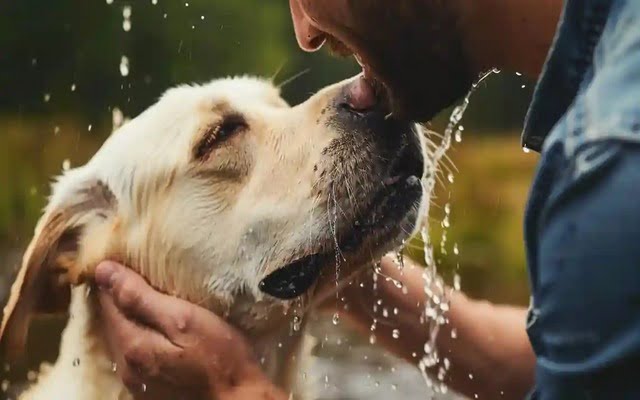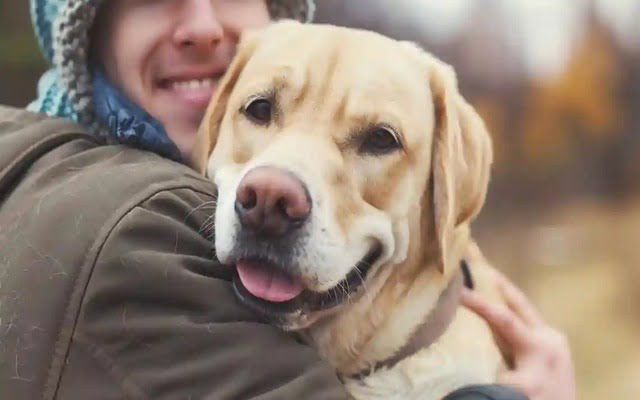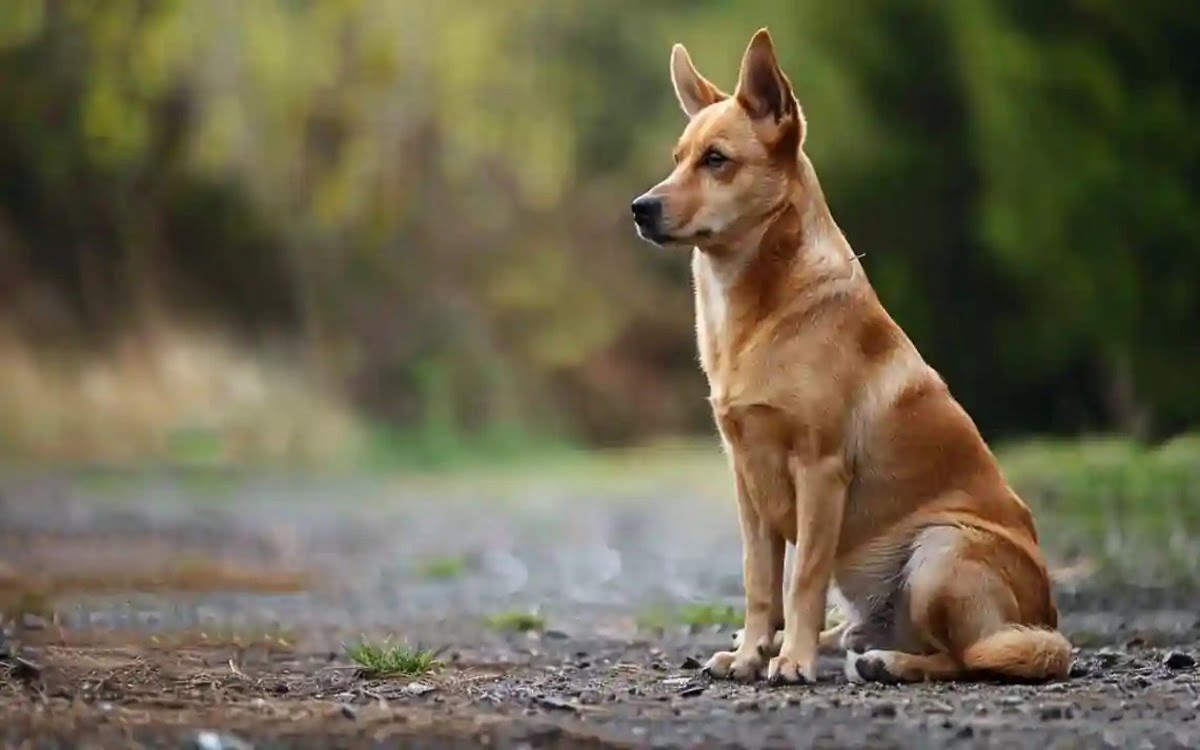Ever gazed into your dog’s soulful eyes and wondered, “Do they love me most?” It’s a question that tugs at the heartstrings of every dog owner. We shower our furry companions with affection, endless belly rubs, and the occasional forbidden treat (don’t tell the vet!), but do they return the favor?
Canine Companionship: A Powerful Bond
Dogs have been by our side for millennia, evolving from wild wolves into cherished members of the family. This long history of co-dependence has fostered a remarkable bond between humans and canines. Studies suggest that dogs can form strong emotional attachments to their caregivers, exhibiting signs of joy, excitement, and even anxiety when separated from them.
The Mystery of the “Favorite Person”
But within this deep connection, a fascinating question arises: Do dogs develop a preference for one person over others? This article will delve into the intriguing world of canine attachment, exploring the factors that might influence a dog’s favoritism, and busting some common myths along the way.
Get Ready to Unleash Your Knowledge!
By the end of this journey, you’ll be equipped to decipher your dog’s body language, understand the science behind canine attachment, and discover strategies to strengthen the incredible bond you share with your furry best friend. So, grab your favorite leash, and let’s explore the fascinating world of canine favoritism!

Understanding Canine Social Behavior: The Science Behind the Wag
Dogs aren’t just adorable companions; they’re also highly social creatures with a complex understanding of the world around them. To understand why a dog might favor someone, we need to delve into their evolutionary history and social instincts.
From Pack Animals to Family Members
Our canine companions descend from wolves, pack animals who rely on strong social bonds for survival. This inherent need for connection translates to our domesticated dogs. They crave interaction, communication, and a sense of belonging within their human “pack.”
Attachment Theory: The Primary Caregiver’s Role
Attachment theory, a concept originally developed to explain human infant-caregiver bonds, has also been applied to understand the relationship between dogs and their humans. Puppies who form a secure attachment with their primary caregiver (often the person who feeds them, plays with them, and provides consistent care) develop a sense of security and trust that extends into adulthood.
Factors Influencing a Dog’s Preferences
While not all dogs exhibit a clear favorite person, several factors can influence their social preferences:
- Feeding: The person who consistently provides meals can become a source of comfort and association with something positive.
- Playtime: Engaging in fun activities like fetch, walks, or training sessions can strengthen the bond between a dog and the person who initiates these activities.
- Walks: The person who takes the dog on enjoyable walks and adventures can become a source of excitement and positive reinforcement.
- Training: Using positive reinforcement training methods creates a sense of trust and respect, potentially leading to a stronger bond with the person who implements the training.
Consider including a table summarizing the factors influencing a dog’s preference, like this:
Dog Care Responsibilities
- Feeding: The person who consistently provides meals
- Playtime: The person who engages in the dog’s favorite games and activities
- Walks: The person who takes the dog on enjoyable walks and adventures
- Training: The person who uses positive reinforcement training methods
Decoding Dog Speak: Tail Wags and Beyond
Does your dog greet you with an enthusiastic tail wag that’s reserved only for you? Or perhaps they shower you with slobbery kisses while seemingly ignoring others? Here are some telltale signs your dog might have a special someone in their heart:
The Body Language Whisperer:
Dogs are masters of nonverbal communication. Learning to “speak dog” can help you decipher their feelings and preferences. Here are some signs to watch for:
- The Tail-Wagging Tale: An enthusiastic tail wag, especially when accompanied by a wiggly body and excited barks, often indicates a joyful greeting reserved for a favorite person.
- The Selective Snuggler: Does your dog curl up on the couch specifically with you, seeking out your lap or initiating cuddle sessions? This physical closeness can be a sign of a strong bond and preference.
- The Playful Pointer: Notice how your dog reacts when you initiate playtime. Do they perk up with excitement or shower you with toys, whereas playtime with others might be less enthusiastic?
- The “Welcome Wagon” Routine: Does your dog greet you at the door with an exuberant display of affection, while greeting others with a more casual sniff or wag? This difference in enthusiasm can be a clue.
Attention Seeking and the Power of Positive Reinforcement
It’s important to remember that dogs are masters at getting what they want. A dog might appear to favor someone who consistently fulfills their needs for play, walks, or training in a way they find most rewarding. This doesn’t necessarily indicate a deeper emotional bond, but rather an understanding of who provides the most enjoyable experiences.
Separation Anxiety: A Sign of Attachment
Some dogs, especially those with a strong attachment to a specific person, might exhibit signs of separation anxiety when left alone. This could manifest as whining, pacing, destructive behavior, or excessive barking. While not a direct indicator of favoritism, it does highlight the dog’s reliance on their primary caregiver for comfort and security.
Not All Dogs Play Favorites
It’s important to remember that not all dogs develop a strong preference for one person. Some pups are social butterflies who shower everyone with affection. Breed characteristics can also play a role, with certain breeds known for being more independent or single-person oriented.

BUSTED! Separating Fact from Fiction in Canine Affection
While the signs above might suggest your dog has a favorite person, there are some common misconceptions floating around the internet. Let’s debunk a few myths and shed light on the truth behind canine attachment:
Myth #1: Spoiling Your Dog Creates Favoritism
Busted! While showering your dog with affection and treats can undoubtedly strengthen your bond, it doesn’t guarantee they’ll play favorites. Think of it like this: a delicious meal might make you love a restaurant, but it wouldn’t necessarily prevent you from enjoying food from another place. The key is to find a balance between affection and establishing boundaries to ensure a well-adjusted and respectful dog.
Myth #2: Ignoring Your Dog Creates Loyalty
Busted! This myth couldn’t be further from the truth. Dogs are social creatures who thrive on positive interactions and socialization. Ignoring your dog can actually lead to fear, anxiety, or even destructive behaviors. Building a strong bond involves consistent training, positive reinforcement, and plenty of love and attention.
Myth #3: Only One Person Can Train a Dog
Busted! Multiple caregivers can effectively train a dog as long as they use consistent methods and positive reinforcement. In fact, having multiple people involved in training can be beneficial, providing your dog with a broader range of experiences and solidifying desired behaviors. The key is to ensure everyone involved is on the same page when it comes to commands, rewards, and expectations.
Pack Mentality: Fostering Strong Bonds with Multiple Caregivers
Even if your dog shows a preference for you, it’s still important to cultivate a strong bond with all their caregivers. This can be especially beneficial in households with multiple family members or situations where the dog spends time with dog walkers or daycare.
Here are some strategies to promote a multi-caregiver bond:
- Shared Activities: Encourage everyone to participate in activities your dog enjoys, like walks, playtime, or training sessions. This creates positive associations with all caregivers.
- Consistent Routines: Establish consistent routines for feeding, walking, and playtime, regardless of who’s caring for the dog. Predictability provides a sense of security and comfort.
- Positive Reinforcement: Everyone involved should use positive reinforcement techniques like treats, praise, and petting to reward good behavior. This builds trust and respect with all caregivers.
- Communication is Key: Open communication between caregivers is crucial. Discuss training methods, daily routines, and any observed behaviors to ensure a unified approach.
The Unbreakable Bond: Beyond Favoritism
Whether your dog showers you with exclusive tail wags or seems to love everyone equally, the most important takeaway is the incredible bond you share. Dogs enrich our lives with unconditional love, loyalty, and endless entertainment.
Understanding Your Dog’s Communication
By learning to “speak dog” and recognizing their body language cues, you can strengthen your connection and ensure their needs are met. Remember, even if your dog shows a preference for a specific person, it doesn’t diminish the love and affection they have for you.
FAQs
Can travel impact my dog’s attachment to me?
Traveling with your dog can be a fantastic bonding experience, creating positive memories and shared adventures. However, extensive travel or leaving your dog with a pet sitter for long periods could temporarily shift their focus. Here’s how to minimize disruption:
- Maintain routine as much as possible: Stick to familiar feeding times and walks even when traveling.
- Bring familiar comforts: Pack your dog’s favorite toys and bedding to create a sense of security in new environments.
- Shower them with love upon return: Extra playtime, cuddles, and treats upon returning home can help re-establish your bond.
Does my dog understand when I’m feeling down?
Studies suggest dogs are highly attuned to human emotions. They pick up on our body language, facial expressions, and even tone of voice. While they may not understand the specifics of a bad day, they can sense your distress. Spending quality time with your dog, cuddling on the couch, or playing a game of fetch can provide comfort and strengthen your bond during difficult times.
How can I create a routine that strengthens my bond with my dog?
Consistency is key! Establish regular feeding times, walk schedules, and playtime sessions. This predictability creates a sense of security and comfort for your dog. Knowing what to expect helps them feel relaxed and trusting. Incorporate training sessions into your routine as well. Positive reinforcement training strengthens your bond and provides mental stimulation for your dog.
Can my dog’s breed influence their tendency to play favorites?
Absolutely! Some breeds, like Border Collies or Golden Retrievers, are known for their eagerness to please and may form strong bonds with multiple people. Other breeds, like Chow Chows or Basenjis, can be more independent and might develop a closer attachment to a single person. Understanding your breed’s tendencies can help you tailor your interactions to build a strong bond.
Should I avoid spending time with my dog if someone else is their favorite?
Absolutely not! Every interaction you have with your dog is an opportunity to strengthen your bond. Even if they seem more drawn to another person, don’t take it personally. Focus on creating positive experiences together. Play fetch in the park, practice some basic commands, or simply cuddle on the couch. Positive reinforcement goes a long way in building a strong relationship with your dog.

I’m Ashley Fowler and dogs have always been my companions from my earliest memories. Growing up, our family dog was my confidant, adventure buddy and sometimes partner in crime (sorry mom, about the chewed shoes!). That bond sparked a lifelong passion for learning about dogs – their unique personalities, their histories, and the special ways they fit into our lives. MDogsW is my way of sharing that passion and hopefully helping others experience the joy of finding their perfect puppy. When I’m not researching dog breeds, you can usually find me hiking with my trusty Beagle by my side or curled up with a cozy blanket, a cup of tea, and a stack of dog breed books.

